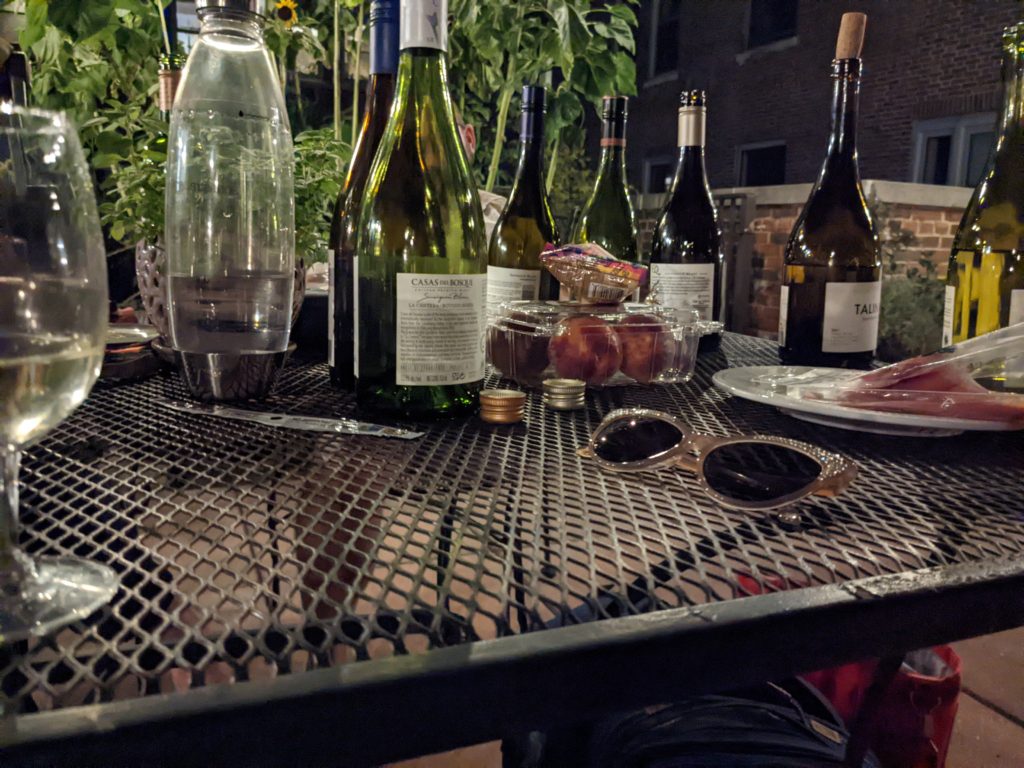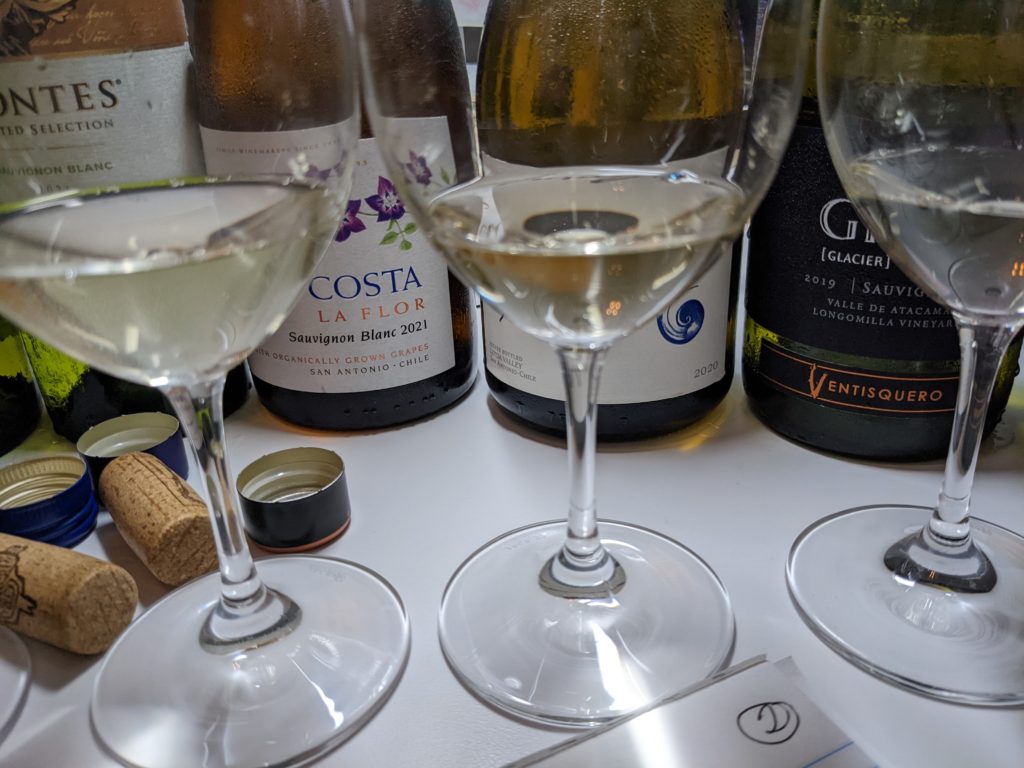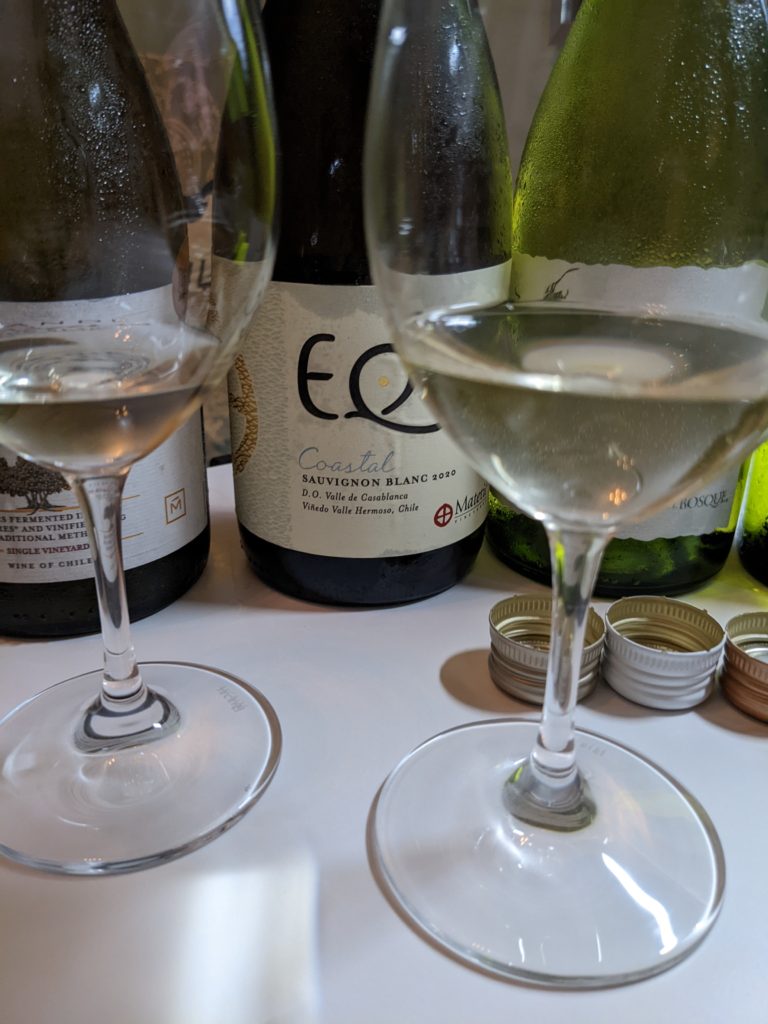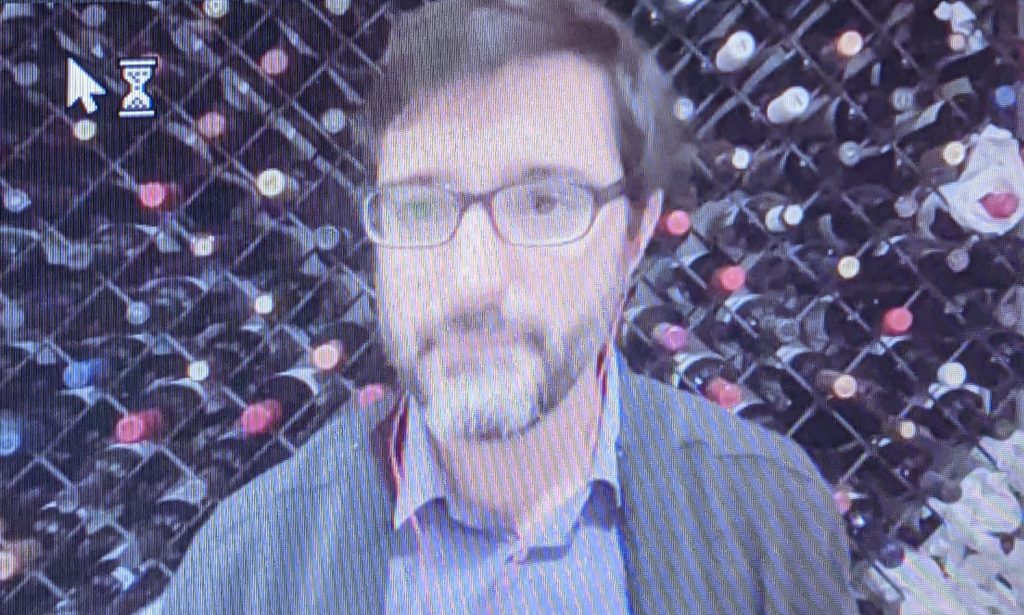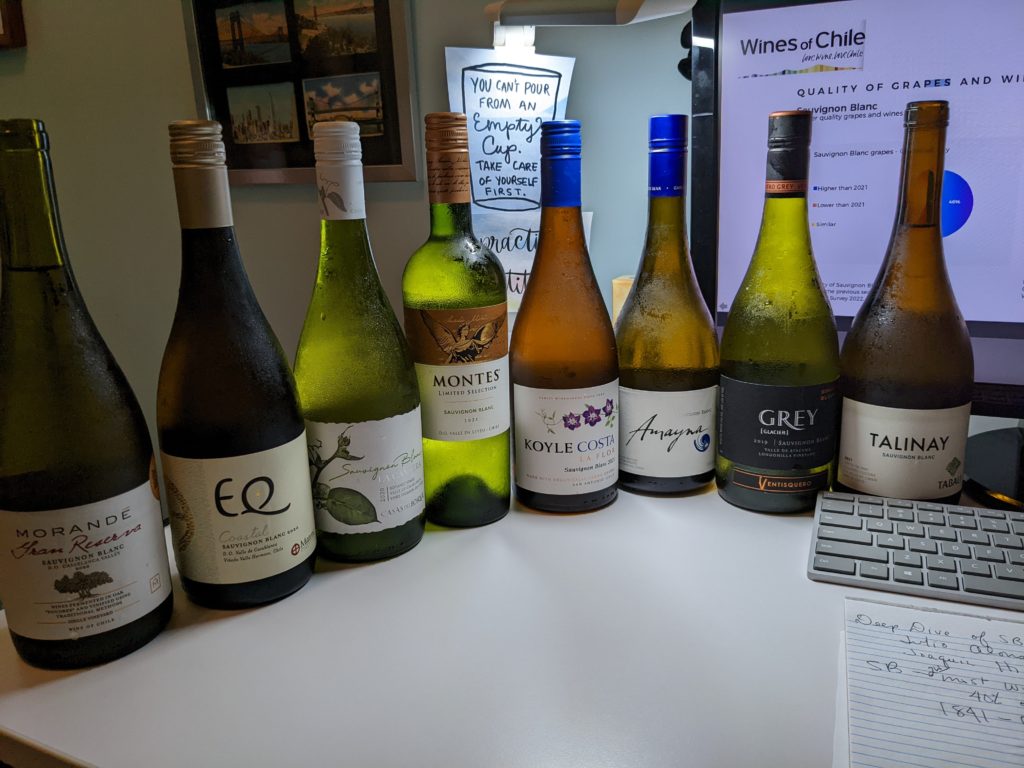
What’s the story, morning glory? As written previously, Chile is hot! And, as I discovered recently, it’s Sauvignon Blancs are really cool. These fresh, crisp white wines are a great option for summer especially with the heat waves we’ve experienced recently on both sides of the Atlantic.
But, more importantly, the story is that Chile is defining and refining what it wants to produce when it comes to Chilean Sauvignon Blanc.
Moreover, this grape is going gangbusters. First brought to Chile by Claudio Gray in 1841, it had a slow start. In fact, the variety represented only a small portion of vineyard plantings by the mid-2000s. Yet, it has seen a significant rise in plantings since that time, growing from 18,300 acres (Oxford Companion to Wine, 4th edition, Jancis Robinson, Julia Harding, Oxford University Press, 2015) to 37,614 as of 2019 (Wines of Chile seminar, 7/26/2022). Today, Sauvignon Blanc represents Chile’s second most widely planted variety and accounts for 40% of all white grapes grown in the country with vines found mainly across the Coastal and Central Valley regions. This sustained growth period has been coincident with Chile’s increased expertise and knowledge.
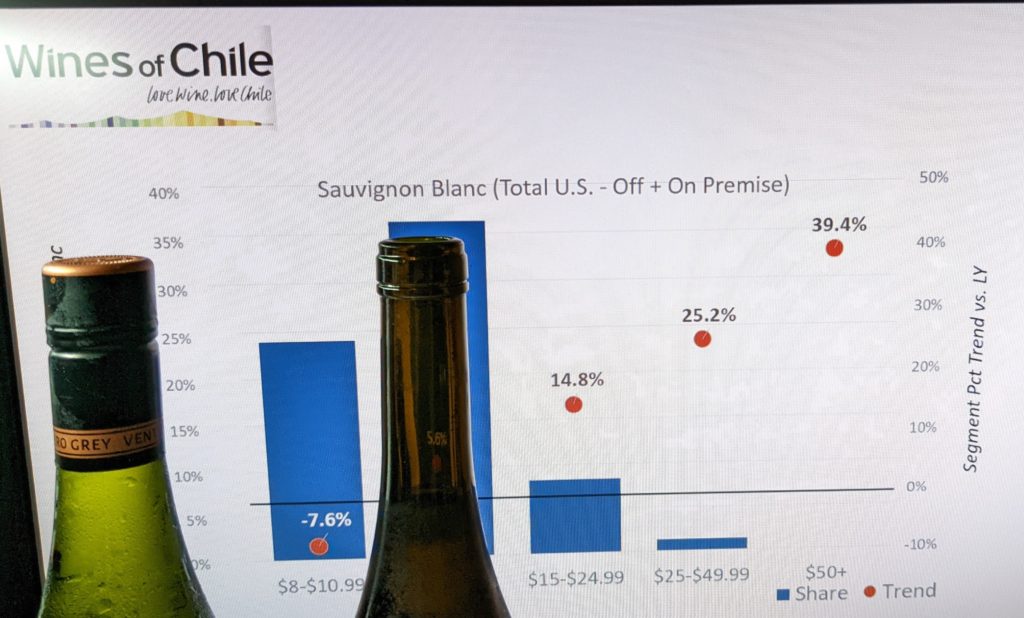
In particular, it was Pablo Morandé of Viña Morandé who, influenced by cool climate whites from California’s Sonoma County, sought to recreate Chile’s own version, noticing how the cool breeze impacted the wines. He selected Sauvignon Blanc as his grape of choice and the Chilean Coastal Range as his terroir.
As more growers have gotten on board with this vision, the country has developed its own unique style of Sauvignon Blanc that is heavily influenced by the cool climate that Chile provides. Specifically, the vast 600-mile wide, Humboldt current that runs from Antarctica to the North Pole is responsible for cool temperatures (52-57°F), fog and morning mist that maintain high acidity, keep the pyrazines (which translate into herbaceous characteristics) and purity of fruit flavors.
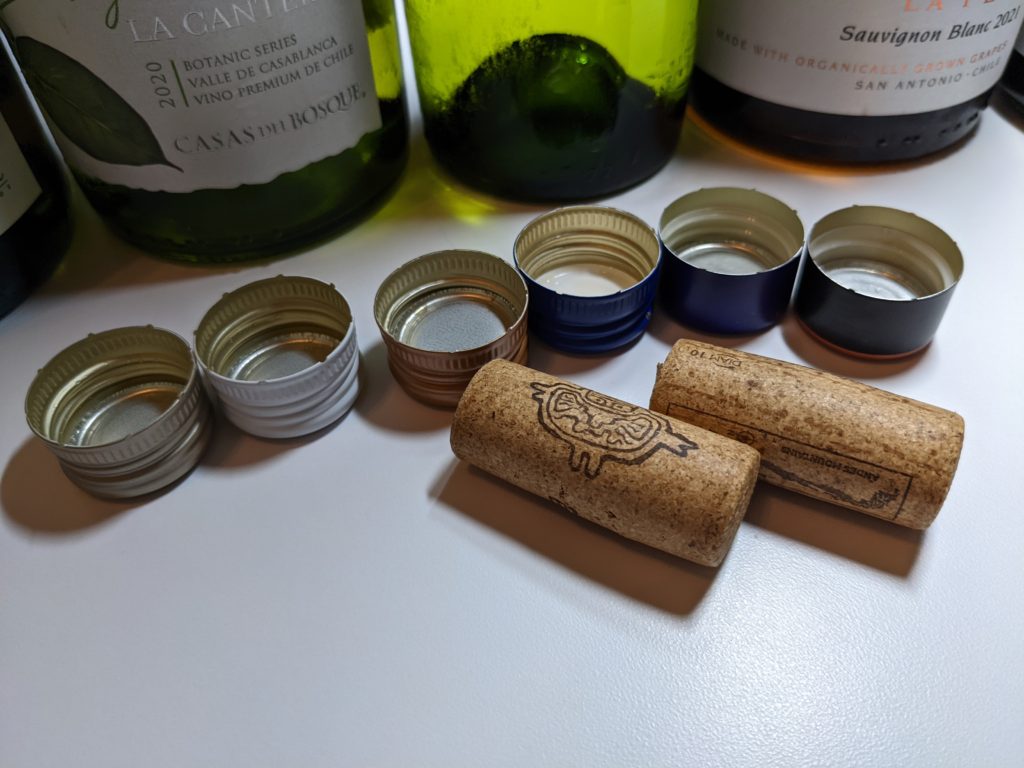
Within Chile, the wineries are further delineating their regions and sub regions. As was heard by Sofia Araya of Veramonte (see story), there is a philosophical shift from grape to geography as the climate conditions now take center stage when considering what grapes to grow where and what style of wine is desired.
In this vein, there are three distinct Sauvignon Blanc growing regions:
>>Coastal Sauvignon Blanc: Humboldt and Coastal Range
These tend to be very herbaceous with jalapeno, grass and asparagus notes and high acid citrus including lime and lemon, along with full bodies with good acidity.
>>Inland Sauvignon Blanc: Central Valley and the Andes Slopes
A slightly warmer climate, this area produces Sauvignon Blancs with more grapefruit and topical fruit notes.
>>Southern Sauvignon Blanc: The Deep South – Patagonia and Bio Bio
These wines typically have really high acidity due to the soil and climate.
The finished wines are further impacted by the diversity of soils within the Coastal Range. For example, Casablanca has iron and marcillo soils, while Limari is dominant in limestone and granite.
As a result, there is a recognizable thread that runs through all of these wines, while each has its own unique flavor profile and attributes, due to microclimates as well as different winemaking approaches.
And, as Chilean winemakers seek to produce for the higher end of the market, these are wines with complexity, concentration and balance. Admittedly, they share the same DNA as New Zealand Sauvignon Blancs and Sancerre, but they offer their own, distinct style, character and expression.
At a recent virtual seminar, members of the wine press were given the opportunity to taste through a selection of eight Coastal Range Sauvignon Blancs, learning more about these wines from Joaquín Hidalgo of Vinous.com, an authority on South American wines as well as about Chile’s market in general from Julio Alonso, Executive Director USA for Wines of Chile.
TASTING NOTES
- Viña Morandé Gran Reserva Sauvignon Blanc 2020 / SRP $20
Pablo Morandé is a pioneer in the area. This is a single vineyard in the warmest part of Casablanca, away from ocean. The wine displays high acidity, with lime, lemon and a slightly woody note. - Matetic Vineyards EQ Coastal Sauvignon Blanc 2020 / SRP $20
This family owned winery practices organic viticulture and is situated in the Rosario Valley of Casablanca. There is black mica in the soils. The wine is predominantly citrus and white nectarine, with some salinity. - Casas del Bosque La Cantera Sauvignon Blanc 2020 / SRP $18
Hailing from the coldest spot in Casablanca, closest to the ocean, this wine is very fresh, concentrated and expressive, undergoing lees contact, with notes of grapefruit and herbs. - Montes Wines Limited Selection Sauvignon Blanc 2021 / SRP $15
With grapes sourced from Leyda, close to the Pacific Ocean, this fresh wine shows very lemony in character with good acidity and minerality. - Viña Koyle Costa La Flor Sauvignon Blanc 2021 / SRP $18
An organic and biodynamic producer, this is situated in San Antonio, Leyda. The wine has more weight and soil presence on the palate, with riper apricot and tropical fruit flavors. - Viña Garcés Silva Amayna Sauvignon Blanc 2020 / SRP $25
Also from Leyda, this wine has well integrated acidity and fresh flavors of citrus, herbs, white flowers with some lees contact. - Ventisquero Wine Estates Grey Sauvignon Blanc 2019 / SRP $25
These grapes are grown in granitic and gravel soils along the Huasco River in the Atacama Desert, one of the driest places on earth. The wine is aged over its lees for ten months in large foudres to soften the wine, with offers up lots of lime, minerality and salinity. - Viña Tabalí Talinay Sauvignon Blanc 2021 / SRP $24
Next to the ocean near the Limari River, these grapes are also grown in desert conditions. This wine is citrus dominant with a distinct herbal undercurrent.
